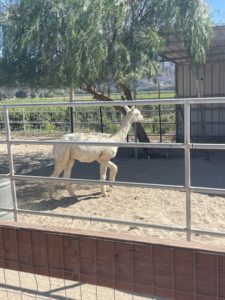 Do you ever think about soil? Soil is alive! Soil helps filter our water, air and produce agriculture and products. One spoonful of soil holds more organisms than people living on Earth. It is one of the planet’s most critical natural resources. The main components are bacteria, fungi, minerals,, and living and dead microorganisms. When managed poorly, soil contributes to carbon emissions, worsening climate change—seen in soil erosion, pollution, and health effects. When soil can’t properly cycle carbon, methane gets released into the atmosphere. It is causing rising temperatures, making it hard to keep soil healthy. Groundwater gets purified through the earth, and the stability of land reflects on the type of soil it sits on. These are some of the vital forms people can identify soil dynamics.
Do you ever think about soil? Soil is alive! Soil helps filter our water, air and produce agriculture and products. One spoonful of soil holds more organisms than people living on Earth. It is one of the planet’s most critical natural resources. The main components are bacteria, fungi, minerals,, and living and dead microorganisms. When managed poorly, soil contributes to carbon emissions, worsening climate change—seen in soil erosion, pollution, and health effects. When soil can’t properly cycle carbon, methane gets released into the atmosphere. It is causing rising temperatures, making it hard to keep soil healthy. Groundwater gets purified through the earth, and the stability of land reflects on the type of soil it sits on. These are some of the vital forms people can identify soil dynamics.
Soil and water go hand in hand
Soil is porous; it absorbs, moves, or stores water. The components, such as minerals and bacteria, will interact with water particles. Soil dissolves water components, purifies, and re-distributes ground and surface water. Meaning that soil minimizes water pollutants and prevents flooding and drought while maintaining the balance of healthy organic matter. An interesting fact on how soil affects water is by the coloring. An example is that iron in water causes red or brown hues. Clay can lead to pink tints, and grey can signify the corner of the water table.
Soil influences food production

The foundation of agriculture is soil. Soil functions to grow food, create fertilizer, manage aquifers, and support farming structures. It is crucial to make sure soil erosion does not occur. Healthy soil allows water to move through the soil to get into roots to improve the cycle of organic matter to maintain soil nutrients. The methods used to grow food also matter on agricultural soil, as they will enhance or worsen the above factors. Soil affects how food is grown; it is essential to be aware of chemical poisons such as pesticides and fertilizers that can be passed into our diets.
Soil influences human health
The relation to soil biodiversity connects to the biodiversity of people’s guts. The micro bacteria in soil can enrich a person’s gut. The benefits of this are keeping immunity up and regulating emotions. So, regulating the soil can aid in the regulation of human health. However, the downside of this is also how soil may harm health. Soil may possess heavy metals or pathogens that do not get filtered out. There has been research on pesticide usage linked to endocrine disorders, meaning the nervous system disrupts. It also ties to cancer and congenital disabilities.
The importance of taking care of soil keeps humans alive. As explained, the role of soil affects health, food, products, and water. To do so requires maintaining soil nutrition and balance by avoiding methods that contribute to climate change. By restoring the carbon balance, the soil will allow many more plants to thrive. Lessening pesticides and dirt tilling will lead to resilience and stability of the ground. Focusing on how pollution gets into soil and water will keep everyone healthier. Another influence that will be positive on human health and soil is to focus on sustainability. Such as regenerative farming, which focuses on restoring lands and better managing carbon intake and outtake.
